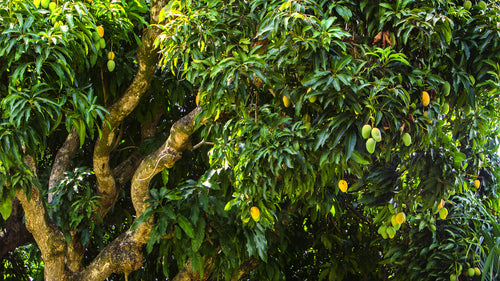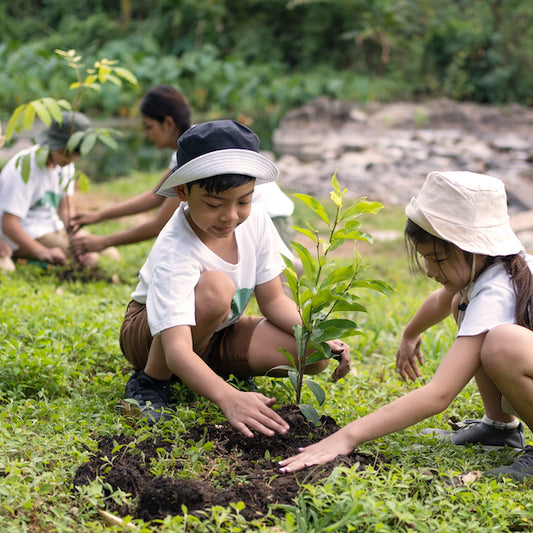Dr.Reddy's Initiative For Balancing Carbon Footprint: Agroforestry Plantation
Dr. Reddy’s Laboratories, a global leader in pharmaceuticals, is extending its commitment to sustainability through its tree plantation initiative in Read more
Plantation Site Gallery
Project Update 2
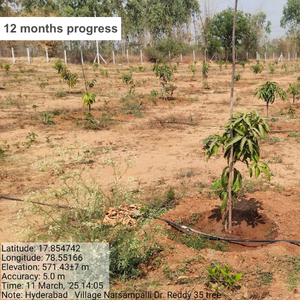
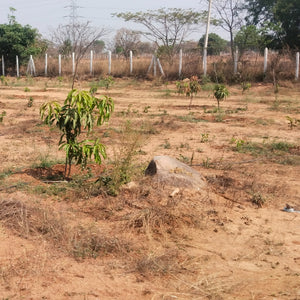
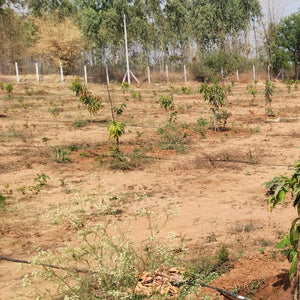

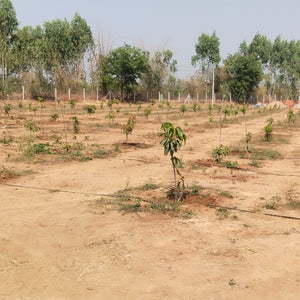
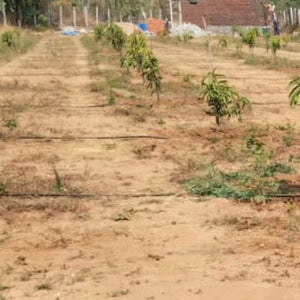
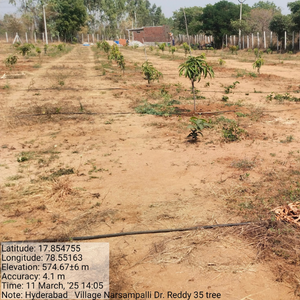
Project Update 1

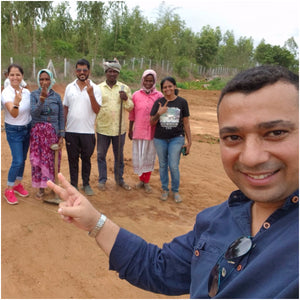
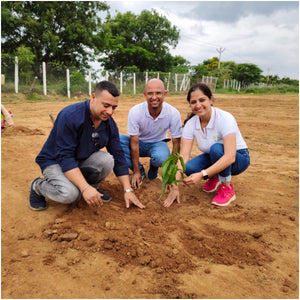

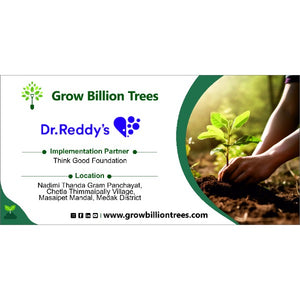
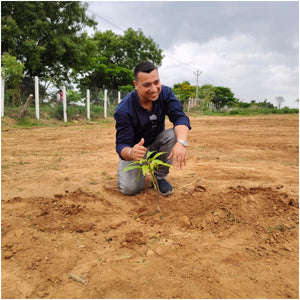
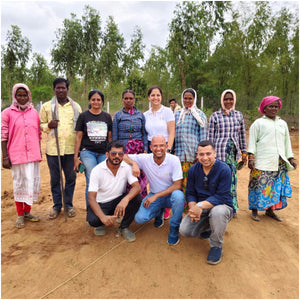
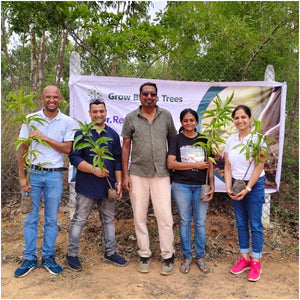
Digital Forest
Forest with 34 Trees planned
Want to plant your tree now?
Plant a Tree @ 299Trees Planted
Dr. Reddy's Laboratories Initiative For Balancing Carbon Footprint: Agroforestry Plantation
Dr. Reddy’s Laboratories, a global leader in pharmaceuticals, is extending its commitment to sustainability through its tree plantation initiative in the agroforestry concept. As part of its corporate gifting program, the company has planted trees on behalf of its valued customers, including Tata Tiscon, reinforcing a shared vision for environmental stewardship. This initiative not only enhances green cover but also contributes to long-term ecological restoration, aligning with Dr. Reddy’s purpose of ‘ Good Health Can’t Wait. ’
By integrating trees into agricultural landscapes, the initiative empowers farmers by improving soil fertility, increasing water retention, and reducing erosion. Agroforestry creates sustainable livelihoods by providing farmers with additional income through fruit-bearing trees while promoting biodiversity and climate resilience. This model strengthens local economies and supports environmentally responsible farming, ensuring long-term benefits for both the community and the ecosystem.
Through this initiative, Dr. Reddy’s Laboratories is redefining corporate gifting by making a lasting impact on the environment and rural communities. By investing in agroforestry, the company is not only celebrating partnerships but also contributing to a greener, healthier, and more sustainable future for generations to come.
Project Planning & Execution
No of Trees: 34
Plantation Location: Chetla, Thimmaipally Village, Masaipet Mandal, Medak District, Telangana 502355
Plantation Date: 21st June 2024
Name of Species: Mango (Mangifera indica)
Species Selection & Its Benefits:
The initiative prioritizes the planting of native tree species, ensuring high survival rates and fostering long-term ecological stability. By aligning tree selection with the farmer’s needs and local market demand, the project enhances environmental sustainability while providing a long-term source of income. The farmer's consent and active participation played a crucial role in selecting the tree species, ensuring seamless integration with existing agricultural practices.
For this initiative, a single farmer was supported with the plantation of 34 Mango (Mangifera indica) trees. Mango was strategically chosen for its resilience, economic benefits, and ecological advantages. As a fruit-bearing tree, it offers a sustainable income source through harvests while enriching soil health, reducing erosion, and creating a favorable microclimate for surrounding crops. This thoughtful selection not only strengthens the farmer’s livelihood but also aligns with Dr. Reddy’s broader commitment to environmental conservation and rural empowerment.
Beneficiaries Details
| SN | Farmer Name | Google Location | Village Name | Plot Size | Mango Planted |
| 1 | K.V. Sunita Rao |
|
Thimmaipally | 0.034 Acre | 34 |
Planting Methodology and Its Advantages
Agroforestry: Dr. Reddy’s tree plantation initiative is rooted in the agroforestry concept, a sustainable land management practice that not only benefits the environment but also provides additional income for farmers. By integrating trees with agricultural landscapes, farmers can generate revenue through fruit production, reduce dependency on chemical inputs, and diversify their income streams, ensuring financial resilience for rural communities. Agroforestry enhances soil fertility, improves water retention, and prevents erosion, contributing to long-term ecological stability. It supports biodiversity, promotes natural pest control, and creates favorable microclimates that enhance agricultural productivity by regulating temperature, reducing wind impact, and providing shade.
As part of its Corporate Social Responsibility (CSR) efforts, Dr. Reddy's recognizes agroforestry as a strategic method for carbon sequestration, environmental regeneration, and sustainable land use. This commitment reflects the company’s proactive approach to sustainability, reinforcing its dedication to responsible corporate practices that support a greener, healthier planet for future generations.
Advantages of Agroforestry
-
Increased Farmer Incomes: This approach helps in increasing the farmer’s income by as much as 3 times. Farmers benefit from diversified income sources, lifting economic resilience.
-
Improved Livelihoods: Agroforestry enhances farmers' resilience to economic and climate-related shocks by creating more sustainable and diversified farming systems.
-
Biodiversity Promotion: Agroforestry supports a diverse range of plants and animals, creating habitats for wildlife and improving ecosystem health.
-
Environmental Sustainability: This model reduces carbon emissions and promotes sustainable land management, aligning with SDG 13 (Climate Action) and SDG 15 (Life on Land).
-
Food Security: Agroforestry enhances agricultural productivity and food availability by integrating fruit-bearing trees with crops, contributing to SDG 2 (Zero Hunger).
-
Carbon Sequestration: Trees planted through agroforestry absorb carbon dioxide, helping reduce greenhouse gas emissions.
-
Climate Resilience: Agroforestry helps mitigate climate change impacts by improving land productivity and fostering biodiversity.
- Improved Soil and Water Management: Trees enhance soil fertility, reduce erosion, and increase water retention, resulting in more resilient farming.
Activities During Tree Plantation
Dr. Reddy’s tree plantation initiative, conducted under the agroforestry concept, was carefully planned and executed to ensure long-term environmental and economic benefits. The plantation activities were carried out by Ms. K.V. Sunita Rao, an experienced farmer, ensuring effective and sustainable planting techniques.
Before the plantation, the land was prepared by clearing unnecessary vegetation, digging pits for optimal root growth and water retention, and enriching the soil with organic compost to enhance fertility. On the plantation day, Mr. Sunil Rana, Product Manager at Dr. Reddy’s, along with Ms. Nidhi Singh, Co-founder and CEO of Grow Billion Trees, and Mr. Satender Kumar, Co-founder and CIO of Grow Billion Trees, personally participated in planting and watering the saplings, reinforcing their commitment to environmental conservation.
A total of 34 Mango trees were planted, providing the farmer with an opportunity for long-term income generation while contributing to biodiversity, improved soil health, and carbon sequestration. This initiative not only strengthens rural livelihoods by diversifying agricultural income but also supports ecological restoration. Through this effort, Dr. Reddy’s continues to make a lasting impact on sustainability and community empowerment.
Conclusion Elements
Impact
Direct Impact
| Parameters | Values | References |
| No. of Trees Planted | 34 | |
| Green Cover (Acres) | 0.034 | |
| Fruit Production Potential (Tons/Year) | 1.19 | |
| Income Generation Potential (Rs/Year) | ₹47,600 | |
| Carbon Sequestration Potential (KG) | 20 |
Small to medium-sized trees can sequester around 10–48 kilograms (22–106 pounds) of CO₂ annually. https://onetreeplanted.org/blogs/stories/how-much-co2-does-tree-absorb |
| Carbon Sequestration by 34 mature trees ( Tons/year) | 0.68 Ton | No. of Trees x Carbon Sequestration by 1 mature trees per year |
| Carbon Credit Equivalent | 0.68 | One carbon credit is equivalent to one tonne of carbon dioxide or the equivalent amount of another greenhouse gas. |
| Carbon Footprint of an avg Indian Citizen (Tons/Year) | 1.8 | https://www.iea.org/countries/india/emissions |
| Offsets Annual Carbon Footprint of (Adults) | 1 | Carbon offset by 34 mature trees per year / Carbon Footprint of an avg Indian Citizen per year |
Indirect Impact
Community Impact
-
Empowerment of Farmers: By providing training and resources for sustainable farming practices, agroforestry equips farmers with skills to enhance productivity and adapt to environmental changes.
-
Food Security: The integration of fruit-bearing trees and crops ensures a consistent food supply, improving nutrition and reducing hunger within the community.
-
Environmental Awareness: Community involvement in tree plantation fosters a sense of responsibility for environmental conservation and promotes sustainable practices in daily life.
-
Enhanced Social Equity: Agroforestry initiatives foster enhanced social equity by empowering marginalized farmers with sustainable livelihoods, bridging economic gaps, and promoting inclusive community participation in environmental conservation efforts.
-
Resilience to Climate Change: The diverse and sustainable nature of agroforestry helps communities mitigate the impacts of climate change, including extreme weather events, by stabilizing local ecosystems.
-
Health and Well-being: Green spaces created through agroforestry improve air quality and offer a healthier environment, contributing to the physical and mental well-being of the community
Environmental Impact
-
Carbon Sequestration: Trees act as carbon sinks, absorbing significant amounts of CO2 from the atmosphere, helping to mitigate climate change and reduce greenhouse gas emissions.
-
Soil Health Improvement: Agroforestry enriches soil through organic matter from fallen leaves and roots, improving fertility, structure, and nutrient availability for crops.
-
Erosion Prevention: Tree roots stabilize the soil, reducing erosion caused by wind and water while protecting nearby agricultural fields and water bodies.
-
Biodiversity Conservation: By creating habitats for various species, agroforestry enhances biodiversity, supporting pollinators, beneficial insects, and native wildlife.
-
Water Cycle Regulation: Trees improve water retention, recharge groundwater levels, and reduce surface runoff, contributing to a more balanced and sustainable water cycle.
- Microclimate Regulation: Agroforestry moderates temperature extremes, reduces wind speeds, and increases humidity, creating favorable conditions for crop growth and ecosystem balance.
Achievements
SDG Goals Achieved through Agroforestry
SDG 1: No Poverty – By integrating fruit-bearing trees into farmland, this initiative creates a sustainable income source for farmers, strengthening financial security and reducing poverty in rural areas.
SDG 2: Zero Hunger – The agroforestry approach improves soil health, enhances agricultural productivity, and promotes sustainable farming, ensuring long-term food security for farming communities.
SDG 3: Good Health and Well-Being – Tree plantations help purify the air, enhance biodiversity, and contribute to a healthier ecosystem. By reducing carbon emissions and pollutants, this initiative supports respiratory health and overall well-being.
SDG 4: Quality Education – Dr. Reddy’s supports knowledge-sharing on sustainable land management, empowering farmers with training on agroforestry techniques, conservation, and ecological restoration.
SDG 5: Gender Equality – By promoting agroforestry, this initiative empowers women in rural communities by providing them with opportunities for economic participation, decision-making in farming practices, and access to sustainable income sources. It fosters an inclusive approach where women play a crucial role in environmental conservation and agricultural development, contributing to greater gender equality.
SDG 6: Clean Water and Sanitation – Agroforestry enhances groundwater recharge, prevents soil erosion, and reduces water runoff, contributing to better water conservation and ensuring long-term water availability.
SDG 8: Decent Work and Economic Growth – The initiative fosters employment opportunities in tree planting, farm management, and agro-processing, encouraging sustainable livelihoods and economic growth.
SDG 9: Industry, Innovation, and Infrastructure – Dr. Reddy’s promotes sustainable agricultural infrastructure by integrating innovative farming practices, enhancing productivity while reducing environmental impact.
SDG 10: Reduced Inequality – By supporting marginalized farmer families, this project promotes income diversification and economic inclusion, reducing disparities in rural communities.
SDG 12: Responsible Consumption and Production – Sustainable agroforestry minimizes reliance on chemical inputs, promotes eco-friendly agricultural practices, and ensures responsible resource management.
SDG 13: Climate Action – Trees act as natural carbon sinks, mitigating climate change by absorbing CO₂, improving soil resilience, and reducing the impact of extreme weather conditions.
SDG 15: Life on Land – This initiative enhances biodiversity, prevents deforestation, restores degraded land, and strengthens ecosystem health through sustainable afforestation efforts.
SDG 17: Partnerships for the Goals – Dr. Reddy’s collaboration with Grow Billion Trees highlights the significance of partnerships in driving impactful environmental and social change. Through collective expertise and community engagement, this initiative contributes to long-term sustainability and ecological restoration.
ESG Achieved through Agroforestry
-
Environmental Impact: Dr. Reddy’s agroforestry initiative promotes sustainable afforestation, enhancing carbon sequestration, combating climate change, and improving air quality. By restoring soil fertility, preventing erosion, and supporting groundwater recharge, this initiative contributes to long-term ecological stability. Additionally, it fosters biodiversity by creating a thriving habitat for wildlife, reinforcing the company’s commitment to environmental conservation and responsible land management.
-
Social Impact: This initiative uplifts rural communities by generating income opportunities through farmer-led plantation activities. Integrating fruit-bearing trees into farmland enhances food security while promoting sustainable agricultural practices. Dr. Reddy’s commitment to gender equality is evident through the active participation of women in all phases of the project, from planting to harvest. Through its Corporate Social Responsibility (CSR) efforts, Dr. Reddy’s actively fosters environmental awareness, community engagement, and long-term socio-economic benefits for farming communities.
-
Governance Impact: Dr. Reddy’s collaboration with Grow Billion Trees ensures ethical governance, transparency, and measurable impact. The initiative adheres to sustainable afforestation standards, with expert-led implementation and strategic execution. By embedding accountability and responsible corporate governance into its environmental efforts, the company reinforces stakeholder trust and sets a benchmark for sustainability-driven corporate leadership.
Building Communities
One of the most profound outcomes of Dr. Reddy’s agroforestry initiative was the sense of unity and collaboration it nurtured within the local community. By actively involving farmers, stakeholders, and environmental partners, the initiative transformed from a simple tree plantation drive into a shared mission for a greener, more sustainable future.
-
Empowering Farmers: The Farmer was not just a beneficiary but an active participant, gaining hands-on experience in sustainable agroforestry techniques. By integrating these practices into their traditional farming methods, he strengthened his economic stability and environmental resilience, ensuring long-term benefits for his livelihood and the ecosystem.
-
Fostering Partnerships: The project encourages active participation from the local farmer throughout the plantation process, fostering a sense of ownership and collaboration in the community. Dr. Reddy’s collaboration with Grow Billion Trees and local farming communities demonstrated the power of collective action in driving meaningful environmental change. This synergy ensured expert-led execution, long-term sustainability, and tangible positive outcomes for both people and nature.
-
Creating a Ripple Effect: As farmers witnessed the economic and ecological benefits of agroforestry firsthand, their enthusiasm encouraged neighboring communities to adopt similar sustainable practices. This cascading effect expanded the initiative’s impact, turning a single project into a widespread movement for resilient and greener landscapes.
This initiative reaffirmed that true environmental sustainability is rooted in community-driven efforts. It was not just about planting trees; it was about planting hope, fostering collaboration, and building a shared vision for a healthier planet.
Commitment by Grow Billion Trees
Most Popular
Trending
Most Popular
1. Dr. Reddy’s Sustainable Tree Plantation Initiative
Ever wondered how a pharmaceutical giant is healing the planet, not just people? Enter Dr. Reddy’s Sustainable Tree Plantation Initiative! Imagine mixing prescription-strength science with some good old Mother Nature magic. Dr. Reddy’s is on a mission to plant trees like they're vitamins for the Earth – boosting biodiversity, absorbing CO₂, and creating healthier environments. Their initiatives combine agroforestry with strategic tree plantations across India, proving that wellness isn’t just for humans, but for the whole planet. So, while they keep our bodies healthy, they're also out there greening the Earth, one sapling at a time. Now, that's a real prescription for change!
2. Agroforestry with a Dose of Innovation by Dr. Reddy
trees, crops, and eco-friendly practices coming together in a harmonious dance. Dr. Reddy’s combines their innovative mindset with agroforestry to reduce carbon footprints, enhance soil health, and promote water conservation. It’s like giving a vitamin boost to our agricultural lands, turning farms into green havens. So, when you think of agroforestry, remember it’s not just about trees – it’s about a greener, healthier future, engineered by a pharmaceutical pioneer with a passion for the planet.
3. Dr. Reddy's Carbon Offset Program
cleaner air, greener landscapes, and a healthier Earth. So, next time you pop a pill, think of Dr. Reddy’s planting trees to make sure we all breathe a bit easier – they’re not just treating symptoms, they’re treating the planet too!
4. Dr. Reddy's Biodiversity Boost through Tree Plantation
Who knew that a pharmaceutical company could be the next superhero for biodiversity? Dr. Reddy’s is stepping up with a biodiversity boost strategy through tree plantations. Think of it as a party for plants, birds, insects, and animals where everyone is invited! By planting a variety of trees, they create habitats and food sources for numerous species. It's like a wildlife disco – more trees, more species, more life! With every sapling, Dr. Reddy’s is crafting a greener, wilder future, ensuring every creature has a seat at the ecological table.
5. Corporate Social Responsibility and Tree Plantation at Dr. Reddy
When CSR meets nature, great things happen! Dr. Reddy’s CSR initiatives go beyond the boardroom, straight to the soil. They’re planting trees to offset carbon, support communities, and boost biodiversity. Every tree they plant is a testament to their commitment to a healthier planet. So, while they innovate in labs, they also cultivate green spaces outside. It’s corporate responsibility with a green twist – making sure the world’s a better place, leaf by leaf, root by root. Now, that’s how you do business!
6. Dr. Reddy's Environmental Education and Tree Plantation
Think tree plantation is just about digging holes and dropping seeds? Think again! Dr. Reddy’s is turning tree planting into an educational adventure. Their initiatives teach local communities about the importance of trees, agroforestry, and sustainable practices. It's like a masterclass in greening the planet! With every tree, they plant the seed of knowledge, cultivating environmental stewards for the future. So, grab a shovel, learn something new, and join Dr. Reddy’s in creating a forest of wisdom, one sapling at a time!
7. Dr. Reddy’s Agroforestry for Climate Resilience
Climate change knocking at your door? Don’t worry, Dr. Reddy’s has a green plan! Their agroforestry efforts are designed to build resilience against climate extremes. By integrating trees into farming systems, they’re creating natural shields against floods, droughts, and soil erosion. It’s like giving the land a superhero cape! Trees enhance soil fertility, conserve water, and stabilize the climate. So, while Dr. Reddy’s fights ailments in the lab, they’re also fighting climate change in the fields – because resilience is key, whether in medicine or the environment.
8. Dr. Reddy’s Community Engagement in Tree Planting
Tree planting isn’t a solo sport – it’s a team effort! Dr. Reddy’s involves local communities in their tree planting initiatives, making it a social event rather than a solo venture. Think of it as a green festival where everyone plays a part. With hands-on activities, workshops, and fun drives, they ensure communities are invested in the health of their surroundings. It's a blend of environmental education and community spirit – like a neighborhood barbecue, but with more trees and less smoke. Dr. Reddy’s shows that when communities plant together, they grow together!
FAQ
What is Dr. Reddy's tree plantation initiative?
Dr. Reddy's tree plantation initiative aims to enhance sustainability through agroforestry. We plant diverse species of trees to boost biodiversity, improve soil health, and reduce carbon footprints. Our efforts focus on creating green spaces that benefit local communities and the environment. With every tree, we’re fostering a greener future and contributing to global climate resilience.
How does agroforestry benefit the environment?
Agroforestry integrates trees into agricultural land, which helps in conserving water, enriching soil health, and increasing biodiversity. It also sequesters carbon, reduces greenhouse gases, and provides a sustainable source of income through timber, fruits, and nuts. At Dr. Reddy’s, our agroforestry projects create healthy ecosystems, contributing to climate change mitigation and environmental sustainability.
Why does Dr. Reddy engage in tree planting?
We believe in holistic wellness, which includes a healthy planet. Tree planting aligns with our commitment to sustainability by mitigating carbon emissions, improving air quality, and enhancing biodiversity. It's part of our Corporate Social Responsibility (CSR) to give back to nature and the communities we serve.
How do trees contribute to carbon offset?
Trees absorb CO₂ from the atmosphere during photosynthesis, storing carbon in their biomass and the soil. Dr. Reddy's tree planting initiatives aim to offset carbon emissions by establishing green cover that acts as a carbon sink, helping to combat climate change and reduce our environmental footprint.
What species of trees does Dr. Reddy plant?
We focus on a variety of native species such as Mango, Guava, Sapota, and Jackfruit, which are well-suited to local climates. These species help maintain ecological balance, promote biodiversity, and provide economic benefits to the local community through their fruits and other resources.
How does Dr. Reddy's tree plantation support local communities?
Our tree plantation efforts involve local communities by creating employment opportunities, enhancing agricultural productivity through agroforestry, and providing training on sustainable practices. The fruits and resources from the planted trees also contribute to local food security and economic development.
What is the goal of Dr. Reddy’s agroforestry program?
Our agroforestry program aims to integrate trees with agriculture to enhance environmental health, increase farm productivity, and promote sustainable land use. By planting diverse species, we aim to improve biodiversity, soil health, and water conservation, while also providing an additional source of income for farmers.
How can I participate in Dr. Reddy's tree plantation drives?
We encourage everyone to join our green initiatives! Keep an eye on our website and social media channels for updates on upcoming tree plantation drives. You can participate by volunteering, donating, or simply spreading awareness about the importance of tree planting and sustainability.
How does Dr. Reddy ensure the sustainability of planted trees?
We collaborate with local communities, NGOs, and experts to ensure the long-term care and maintenance of the planted trees. Our initiatives include regular monitoring, providing resources for watering and protection, and engaging local communities in sustainable practices to ensure the trees thrive.
What are the future plans for Dr. Reddy's tree plantation initiatives?
Dr. Reddy’s aims to expand its tree plantation efforts across more regions, planting a greater variety of species, and engaging more communities. We are committed to scaling up our agroforestry projects to enhance biodiversity, fight climate change, and contribute to sustainable development goals, ensuring a greener and healthier future for all.
- Choosing a selection results in a full page refresh.
- Opens in a new window.


